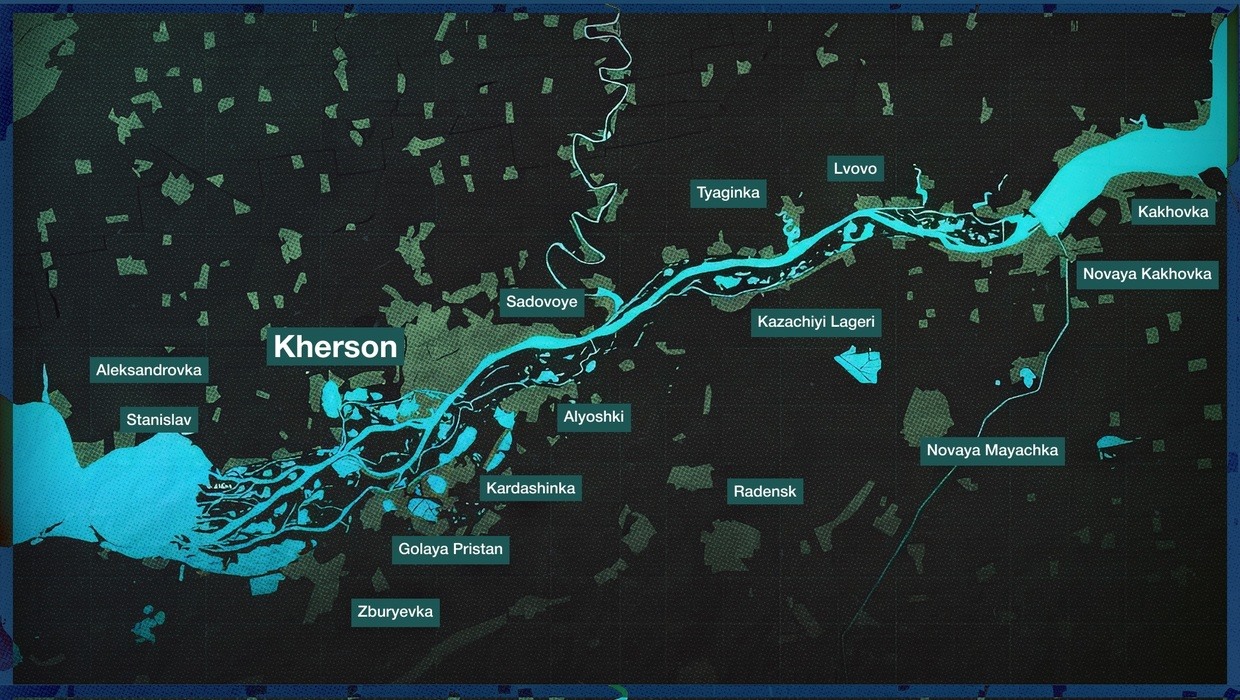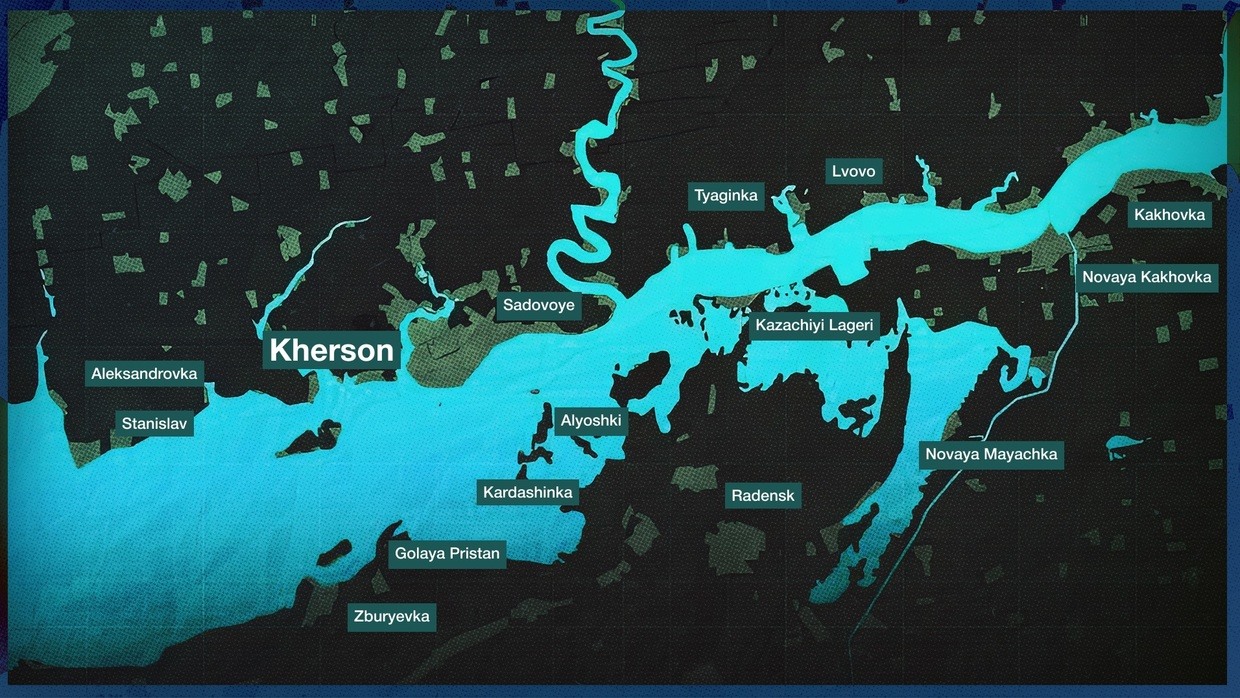Hậu quả từ vụ vỡ đập
Hôm 6.6, ông Evgeny Balitsky, quyền thống đốc tỉnh Zaporizhia cho biết, việc phá hủy đập thủy điện gần thành phố Novaya Kakhovka ở tỉnh Kherson do Nga kiểm soát gây ảnh hưởng tới nông nghiệp địa phương và có thể tác động đến hoạt động tại nhà máy điện hạt nhân lớn nhất châu Âu Zaporizhia (ZNPP).
Ông Balitsky nói, mực nước trong hồ chứa gần ZNPP đã giảm 2,5 mét và có thể giảm thêm nữa. Ông nói với kênh Russia 24 TV: “Chúng tôi cho rằng mức sụt giảm thậm chí còn lớn hơn, lên tới 7 mét. Nước rất quan trọng để làm mát các lò phản ứng và nhiên liệu đã qua sử dụng tại cơ sở, do đó ngăn chặn sự tan chảy”.
Tuy nhiên, ông Balitsky phủ nhận rằng diễn biến như vậy có thể “ảnh hưởng đến an ninh trong khu vực hoặc toàn bộ khu vực”. Ông cũng cho hay, mực nước hiện tại gần ZNPP là “không bình thường" nhưng vẫn “có thể chấp nhận được”.
Người đứng đầu Cơ quan Nguyên tử Quốc tế (IAEA), Rafael Grossi, cũng khẳng định “không có rủi ro tức thời nào đối với sự an toàn của nhà máy”.
Ông Grossi nói thêm, mực nước trong hồ chứa “ở mức khoảng 16,4 mét” vào sáng 6.6 nhưng vẫn đang giảm. “Nếu giảm xuống dưới 12,7 m thì không thể bơm nước để làm mát trạm được nữa. Việc không có nước làm mát trong một thời gian dài sẽ khiến nhiên liệu tan chảy và hệ thống phát điện khẩn cấp không thể hoạt động được” - ông Grossi lưu ý.
Trong khi đó, ông Balitsky cảnh báo rằng việc phá hủy con đập cũng có khả năng gây thiệt hại cho ngành nông nghiệp của khu vực do thiếu nước trong các kênh tưới tiêu địa phương.
Ông nói, nước trong các kênh sẽ đủ dùng trong một tháng rưỡi, các doanh nghiệp nông nghiệp địa phương có khả năng tồn tại trong mùa hiện tại nhưng sẽ cần giải quyết vấn đề này vào năm sau.
Thống đốc tỉnh Kherson, ông Vladimir Saldo, đã đưa ra một cảnh báo tương tự. Ông cho hay, ngay khi mực nước giảm xuống - và điều này sẽ xảy ra khá sớm - hồ chứa sẽ mất lượng nước dự trữ dành cho tưới tiêu.
Các nhà chức trách ở Crimea, nơi cũng nhận nước từ sông Dnepr, cho biết có trữ lượng đủ để đối phó với tình trạng thiếu hụt tiềm ẩn. Tuy nhiên, thống đốc Crimea, ông Sergey Aksyonov, vẫn thừa nhận rằng việc vỡ đập có thể dẫn đến mực nước giảm ở kênh Bắc Crimea, nối bán đảo với sông Dnepr.
Ông Vladimir Leontyev, thị trưởng thành phố Novaya Kakhovka nằm ở hạ lưu con đập bị phá hủy, cho biết mực nước trong thành phố tiếp tục dâng cao suốt cả ngày, hơn 11 mét, cao hơn dự kiến ban đầu sau khi đập bị vỡ.
Ông Leontyev cũng cảnh báo, đập thủy điện tiếp tục bị vỡ và phòng tuabin đã bị ngập lụt. Video được quay ở Novaya Kakhovka do RT thu được cho thấy đường phố ngập trong dòng nước bùn.
Nga - Ukraina đổ lỗi cho nhau
Con đập được cho là đã bị phá hủy bởi một vụ nổ vào đầu ngày 6.6. Bộ trưởng Quốc phòng Nga Sergei Shoigu gọi vụ việc là hành động phá hoại của lực lượng Ukraina. Việc chính quyền Ukraina bắt đầu giảm mực nước ở một con đập riêng mà họ kiểm soát trên sông Dnepr cho thấy đây là “một cuộc tấn công phá hoại quy mô lớn do chính quyền Kiev lên kế hoạch từ trước” - ông Shoigu nói.
Thư ký Báo chí Điện Kremlin Dmitry Peskov cũng cho rằng vụ việc “là phá hoại có chủ ý của Ukraina”, cảnh báo về “những hậu quả nghiêm trọng” đối với hàng chục nghìn cư dân địa phương và hệ sinh thái.
Ông lưu ý, vụ phá hoại nhằm cắt nguồn cung cấp nước cho bán đảo Crimea, các cuộc tấn công dường như có liên quan đến các cuộc phản công quy mô lớn gần đây của Ukraina vào mặt trận Donbass, vốn đã bị lực lượng phòng thủ của Nga ngăn chặn.


Tuy nhiên, Tổng thống Ukraina Volodymyr Zelensky tuyên bố, con đập đã bị hư hại trong một cuộc tấn công của Nga.
Ông Mikhail Podoliak - trợ lý hàng đầu của Tổng thống Ukraina - cáo buộc Nga dàn dựng “thảm họa môi trường lớn nhất ở châu Âu trong nhiều thập kỷ”.
Nhà bình luận quân sự Nga Vladislav Ugolny tin rằng vụ nổ đập sẽ khiến mọi hoạt động quân sự trong khu vực trở nên khó khăn hơn nhiều.
Giờ đây, cả hai bên phải rút khỏi khu vực và chiếm các vị trí ở bờ đối diện của sông Dnepr - ông giải thích, đồng thời cho biết thêm rằng “cuộc đua” giành quyền kiểm soát phần này của sông đã bị dừng lại.
Ông Ugolny cũng cảnh báo về nguy cơ vỡ đập có thể tiếp tục xảy ra, và bất kỳ công việc sửa chữa thực sự nào cũng không thể thực hiện được trong hoàn cảnh hiện tại.








